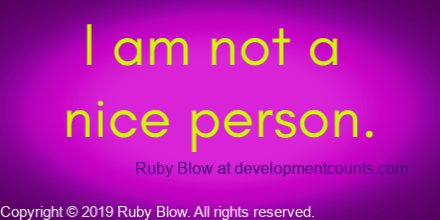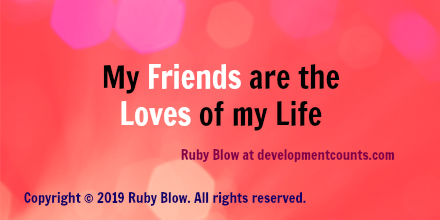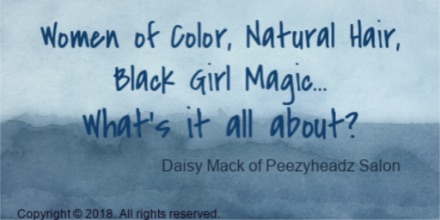Dating vs. Hanging Out
Yesterday, one of the counselors I have supervised asked the question “What is dating versus hanging out?” I am grateful for this supervisee/former graduate student of mine…he learns the art of therapy best by talking about life.
He’d been observing people and reflecting on the challenges they face in their relationships. It appeared to him that people seem to get into relationships with very serious responsibilities/consequences (like children or broken heartedness)…but with little conscious awareness or empowerment regarding the choices they are making.
My mind was actively scanning all of the related elements to the topic and how to engage each supervisee on the topic of dating, hanging out and the state of modern relationships.
It began, as many discussions do, with a reference by one supervisee to the “good old days” when people sought “marriage”… when the purpose of dating was clearly to find a mate.
The Institution of Marriage
We explored marriage as an institution that is changing. How in the past people married because of societal norms –
- because of the need to expand family resources; or
- because getting married was the structure for having children and raising a family; or
- they married due to a pregnancy; or
- they married because they wanted to have sex; or
- they got married due to religious beliefs and family pressure.
We talked about arranged marriages and communities that engage in match making for their unwed singles. We discussed how people stayed in marriages whether they were happy or not and that love and happiness were not necessarily the expectations of marriage.
As well as the benefits, we also explored the challenges of the level of commitment that existed when there was a heavy stigma around divorce…how it undoubtedly led to people remaining in abusive or unhealthy relationships.
Relationships that allowed little room for growth or for either party to explore their own dreams and personal development without risking their marriage – unless their spouse was growing and changing as well. There must be a space for individual expression and then shared experiences within the context of committed relationships and marriage for that relationship to thrive.
Divorce and Other Challenges
I shared how I’d spoken with two recently divorced men in the past year whose wives filed for divorce 20 years into their marriage. How it seemed to me a common refrain that the husband was surprised by the desire to split because he had (on both accounts) not “changed”…both men struggling with why their wife wanted something different. Meanwhile the wives wanted something more…whether it was new experiences like travel and learning or the desire for renewed passion, intimacy and/or sex in the marriage.
Based on my studies on relationships and how they form, I shared this concept: “Men get married hoping the woman will never change and women get married hoping he will change.”
Based on the relationship theorists I study…it is best for women to select a man who they already respect and admire. That women should select partners based on who he is now and not who they “hope” he will be…this is a concept discussed by the cultural anthropologist Allison Armstrong.
John and Julie Gottman talk about their findings from their 30 plus year longitudinal studies that happily committed relationships are those where the husband allows himself to be influenced by his wife…not the other way around.
I shared a framework that Dr. Robin Smith, author of “Lies at the Altar: the Truth About Great Marriages,” describes meaningfully…that she never congratulates people for the mere length of their marriage…15 years, 20 years, 30 years, 40 years…she said you never know what “hell” they may have endured. Dr. Smith is a proponent of the IMAGO model from Harvelle Hendrix. This model states that we select partners that represent aspects of both of our parents.
The Cultural Revolution
We discussed the impact of the cultural revolution:
- around gender roles and women’s fight for equal treatment and equal opportunity;
- the lessening of the stigma of having children out of wedlock;
- and the impact of sex being less confined to marriage….that women and men began to pursue sex for gratification outside of marriage and without the intent of creating a life.
We explored the options that this has provided both men and women…and also how historical functions for and with one another are still in transition and under rapid construction. How, as result of these shifts, we no longer have prescribed road-maps for dating. That the very premise of dating , hanging out and the desire for a primary relationship is now based on “love” and not on the pragmatic and practical elements of the agricultural era when we needed marriage and procreation to have a large family to help raise the crops (so to speak).
Marriage is no longer the only way for girls/women to leave their family of origin…it is no longer the only context by which they can obtain some resources or power.
Marriage is no longer a mandate that men have to fulfill as a function of their value to society and a way to show that they are honorable.
We explored how all of these choices and options (to marry or not marry) have led us further away from our traditional paths (dating rituals) to relationship development. There are a few exceptions like people meeting in social, academic or work environments… i.e. proximity being a major factor in people getting to know one another, like one another, and make a joint decision to “stick” with one another. In place of the old ways we have newer technology based ways like….
- internet dating sites…which involves a vast amount of sorting;
- people meeting via social media sites;
- using dating apps…that show proximity to potential people to date and allow people to have to mutually select one another in order for a “match” to be made.
I think we have to be cautious about determining which was better…then or now…there were and are challenges in all eras.
There are generational and gender differences in terms of expectations about the role of romantic love in one’s life. As therapists, we have to be cautious about imposing our values. However, I think we have an obligation to help people identify, define and live within their values.
Commitment as a Container for Your Life
This is not to say that they should live within those values in a rigid and harmful manner. It is to say that commitment is a container for one’s life, work and relationship to happen.
When we commit, we are making a decision to address the challenges that come up rather than to simply walk away. One of the biggest challenges of dating and the search for companionship is that there are many alternatives…including not committing to one person and the option, of course, to be alone.
It is my biggest concern that increasingly, people don’t want to commit to the concept of dating…because dating represents the possibility of seriousness and marriage. Meanwhile uncommitted relationships offer much of what marriage used to offer with the exception of an agreement to continue to hold a safe and sacred space for one another. My concern is that the trade off between freedom and commitment is a lack of true fulfillment either way.
If we think of a relationship as a plant growing in a pot/container…the fact that once the roots have grown and reached the edges of the container, the plant must be moved to a new and slightly larger pot. If this is not achieved, the roots will crowd one another…there will not be enough soil and nutrients…the roots rot…the plant dies.
Relationships ideally will offer a container from which to take root and grow. When the time comes, the relationship will grow and be placed into a new pot with fresh soil. If the original intent of the relationship is to commit to life’s journey together, then their journey continues as one.
However, as we know all too well, sometimes the commitment comes to an end and it is necessary for the plant to be divided and split between two containers. The separation is painful…but a necessary part of growth.
Copyright © 2016 Ruby Blow. All rights reserved.
Share your thoughts on Linkedin, Facebook, Twitter or log in to one of your accounts below to comment. Subscribe to my YouTube channel.





